- europages
- >
- COMPANIES - SUPPLIERS - SERVICE PROVIDERS
- >
- painting system
Results for
Painting system - Import export

NOVELIS DEUTSCHLAND GMBH OHLER® - FLEXROHRE
Germany
Novelis products are renowned for their use in building and construction, but our aluminum also can help ensure the efficiency of buildings and maintain the comfort of those inside. Novelis aluminum is flexible but strong, stylish but practical – characteristics that make it ideal for construction of roller shutters, sunbreakers and windows. Exposed to the harshest conditions, our pre-painted rolled aluminum can withstand mother nature’s worst yet retain its ease of use and like-new aesthetics for years to come. Novelis SP80 is the name of a particularly abrasion-resistant paint system for roller shutter slats based on polyamide-treated premium polyurethane.
Request for a quote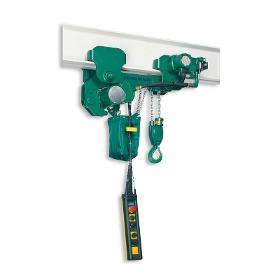
J.D. NEUHAUS GMBH & CO. KG
Germany
LMF JDN Low Headroom Trolleys The trolley for areas where headroom is restricted Carrying capacities: from 0,5 t up to 6,3 t When only very low headroom is available we recommend the JDN-Ultra-Low Monorail Hoists. Standard Features State of the art by using JDN Air Hoists PROFI TI as well as a new driving motor Low-maintenance and low-wear operation of the motors by means of a reduction of components No additional motor lubrication required 2-step travelling speed Changeable track width * Advantages Able to negotiate curves Longer cross beams to improve the minimum headroom even with bulky loads Options Rack and pinion drive Spark-resistant package Offshore paint Energy Feeding Systems The energy can be fed by various different systems: Energy chain C-shaped rail Square rail Spiral hose Hose trolleys * Please contact us.
Request for a quote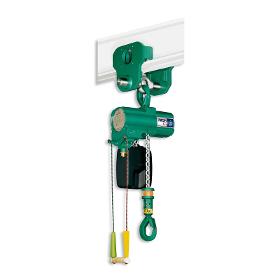
J.D. NEUHAUS GMBH & CO. KG
Germany
PROFI 6 TI LM JDN Trolleys Carrying capacities: up to 20 t as manual trolleys (LN) for pushing or pulling the trolleys by hand as reel chain trolleys (LH) for moving the trolleys by unwinding the reel chain as motorised trolleys (LM) powered by an air motor Standard Features easy to install with anti-climb and anti-drop devices robust and with little maintenance able to negotiate curves Options Rack and pinion drive 1 Spark-resistant package 2 Offshore paint 2 Energy Feeding Systems The energy can be fed by various different systems: Energy chain C-shaped rail Square rail Spiral hose 1) From LM 3.2t upwards 2) Not available for LN 1t
Request for a quote
RIPPERT ANLAGENTECHNIK GMBH & CO. KG
Germany
Powder systems with robots can be effectively used even for small batches. In addition to the classic method of powder coating using manual spray guns or masts, the demand for robot systems has risen sharply. Rippert offers the entire spectrum here too. Both powder-coating systems with robots and wet painting systems are supplied with intelligent software solutions. This also allows the economical processing of small lot sizes. Automatable high-speed paint changing systems have also been available for some time. Rippert plays a leading role in automated powder-coating systems with industrial robots.
Request for a quote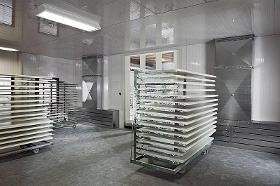
RIPPERT ANLAGENTECHNIK GMBH & CO. KG
Germany
For forced drying. Drying rooms Drying rooms offer the possibility to make the drying process faster and more comprehensible through forced drying. Depending on the paint systems, the temperature and humidity of the air can be adapted to suit the special requirements. In the high-gloss field in particular, special filters ensure the demanded degree of purity. Depending on the size and the specific task, Rippert also offers its drying rooms with heat recovery.
Request for a quote
RIPPERT ANLAGENTECHNIK GMBH & CO. KG
Germany
Water-sprinkled spray walls and spray booths with automatic paint sludge filtration system In wet separation, the overspray meets the water film of the spray wall and is thereby bound in the water. The sludge formed by this is discharged using sludge filtration systems. Water-sprinkled spray walls The overspray is sucked in in the lower area of the vertical water drain surface and is bound in water when it meets the film of water. The paint mist is washed out further in the lower section of the washout tower using a vortex washing system with downstream baffle plate separator. In order to replace the water lost due to evaporation, it is recommended to fit an automatic water level controller. The entire quantity of water is fed to the automatic paint sludge filtration system via the disposal pump. A coagulant is added to the water by an automatic dosing unit, as a result of which the paint sludge in the circulating water is disbonded and can be separated more easily. The cleaning of the circulating water takes place in the separately arranged paint sludge filtration system. Depending on the paint system and plant version, the separation system is operated using a full or partial current method. Water-sprinkled spray walls/booths with underfloor paint mist extraction For the painting of large parts with a high paint throughput. The paint mist is sucked in under the grating cover. A substantial part of the overspray is already bound in the water by the constant sprinkling of the entire floor of the basin. The paint mist is washed out further in the lower section of the washout tower using a vortex washing system with downstream baffle plate separator. Optimum capture of the paint mist is guaranteed by the laminar air flow inside the booth. A further advantage over comparable systems is the low water basin height and the associated low foundation depth. The sludge formed by this is discharged using sludge filtration systems. Advantages
Request for a quote
RIPPERT ANLAGENTECHNIK GMBH & CO. KG
Germany
With high-quality filter tubes and PTFE diaphragms. Paint dust filters Wet painting also results in overspray. Overspray is the solid portion of the paint that is not taken up by the workpiece. According to the purpose of use, the overspray is moist and sticky immediately after release. It is captured by the exhaust air stream in the spray booth and fed to a filter. This can be, for example, a baffle plate filter, paper filter, fleece filter, glass fibre filter or also combinations of these. The adhesive effect causes the paint particles to adhere to the contact surfaces of the respective filter medium, as a result of which a good degree of separation is achieved. However, all these filters are storage filters, i.e. the filters clog up more and more during operation and cannot be regenerated. A filter exchange becomes necessary if the exhaust air rate of the spray booth falls below the minimum. This can be very time-consuming under certain circumstances and the work process must be interrupted in order to do it. To make things worse, not only must the filtered and bound paint residues be disposed of, but also the actual filter materials. Such tooling times are not justifiable for automatic, continuous or multi-layer painting processes. Continuous procedures such as automatically cleaned filters are likewise required for this. The humidity and the adhesiveness of the particles to be filtered are thereby the problem. In order to solve this problem, the paint particles should be relieved of their adhesive capability as far as possible whilst still inside the paint booth. Our patented ‘RTS-Rotation’ system is outstandingly well suited for this. The system is comprised of slowly rotating brush rollers, which take up the adhesive paint particles on the surface of the bristles and allow them to dry there. The bristles are automatically regenerated at pre-specified time intervals by combing devices that swing in at the rear of the brush rollers. The dislodged paint residues can then be removed and disposed of either manually during work breaks or automatically during operation. The degree of separation of this system is, however, insufficient to satisfy the environmental protection requirements concerning residual dust content in the exhaust air. A further filter stage is necessary for that. It must be assumed that the paint particles arriving here are to a certain extent still damp and sticky. For this we use special paint dust filters with high-quality filter tubes with PTFE diaphragms. If necessary, precoating agents (auxiliary dust) are used in order to neutralise the adhesive capability of the particles and to keep the dust layer on the filter elements permeable to air. The precoating agent is injected into the raw air pipe by means of special dosing units. The filter tubes are cleaned by means of compressed air impulse cleaning. The use of this technology requires special know-how. We have had the appropriate experience for almost ten years. The implemented plants have capacities ranging from 5,000 to 90,000 m³ /h. Because of the large number of different paint systems, individual experiments are usually necessary in our pilot plant in order to find the correct solution for the individual case.
Request for a quote
RIPPERT ANLAGENTECHNIK GMBH & CO. KG
Germany
Standard advantages: RTS-Rotation – low-maintenance dry spray booth Overspray dry separation demonstrates its strengths in practice above all when relatively large quantities of paint have to be processed and the overspray portion cannot be reduced any further. Spray booth with dry separation are usually equipped with disposable filters or manually regenerative filters. These cause costs for spare filters, maintenance and disposal. In addition to that, operation has to be interrupted in order to exchange the filters. The ‘RTS rotation’ system was developed by Rippert in order to reduce these costs and tooling times. Maintenance intervals and filter service lives are prolonged significantly in comparison with conventional systems due to the new brush pre-filtration. How the ‘RTS-Rotation’ system works Overspray separation in the RTS-Rotation system takes place by means of a pre-filter and a fine filter stage. The pre-filter stage is formed by vertical, slowly rotating brush rollers. The bristles present a very large total surface area and absorb the adhesive particles from the overspray. During the slow rotation, the paint particles can dry on the tips of the bristles. This results in slowly growing cakings on the bristles. Scrapers are mounted in the area behind the brush rollers that continuously remove these cakings from the bristles. The dislodged, hardened material falls into the drawers arranged under the brushes and can thus be simply disposed of. The dry paint dust may often be disposed of as ‘commercial waste’. The brushes otherwise require little maintenance and do not need to be exchanged or renewed. The fine filter stage is formed by a special fleece filter, which is arranged above the brush rollers and must be manually maintained or exchanged in the standard version. The maintenance intervals depend on the paint material used. Automatic cleaning or an external fine filter with automatic cleaning is also possible as an option. Over 10 years of operational experience shows that around 75 to 95% of the overspray is separated out by the pre-filter stage and the rest by the fine filter stage. The degree of separation depends strongly on the type of paint and the drying reactivity during the flying phase. Use of the RTS-Rotation with the following paints Before practical use, the paints are tested and approved in Rippert’s own pilot plant. Stove enamels and 100% UV paint systems cannot be used. The horizontal version Furthermore, it is possible to use the system as a horizontal underfloor extraction system. This version is used, for example, by a machine manufacturer for large parts. In addition, a drag conveyor with gulley extraction is used there in order to automatically transport the particles cleaned off the brushes out of the pit. Conclusion The RTS-Rotation system is particularly useful when relatively large quantities of paint with an unavoidable overspray portion have to be processed, as otherwise a great deal of residual waste would result using conventional technology. Compared to water-sprinkled spray walls and normal dry spray booths the amortisation period is shorter; it is frequently less than two years.
Request for a quote
PERKUTE MASCHINENBAU GMBH
Germany
Paint stripping system Clean-o-mat RC - E The proven and solid single-chamber system for the automatic and efficient paint stripping of large and small components. The paint stripping of the products is carried out in the spray process using an appropriate organic bio stripper. Following this, the rinse occurs in a separate system. The PERKUTE-system: economically - environmental – effektive Basic equipment Compact and sturdy construction Made of stainless steel Simple operation Space-saving 3D-blast pipe system incl. fan nozzles Low water pressure switch as dry-run protection Suction filter made of stainless steel front of the pump Automatic steam extraction Electronic basket drive 2“ ball valve for the tank emptying Safety limit switch at cover Stainless-steel pump Technical data No lieability accepted for specifications, which are subject to alteration. Tailor-made machines to be quoted on request. Before and after pictures
Request for a quote
VENJAKOB MASCHINENBAU GMBH & CO KG
Germany
This machine has a twin cleaning unit, therefore it can be used for a dual application of water and solvent based paint systems. Reproducible results guarantee process reliability. The modular construction enables future expansion of the machine line and thereby ensures your investment for the future. Working width: 1,300 mm Working height: 920-960 mm Feeding speed: 3-8 m/min. Exhaust air volume: 7,000 - 10,000 m³/h Connect value: 20 KW Machine dimensions: 5,100 x 3,440 x 2,850 mm (L/M/H) The twin cleaning units of this flexible system technology enable a dual application for water and solvent based paint systems. The targeted paint-recovery by means of the patented V-belt system offers a maximum of profitability and environmental friendliness.
Request for a quote
VENJAKOB MASCHINENBAU GMBH & CO KG
Germany
This "stand-alone solution" is designed to meet flexible production requirements and can be used for solvent and water based paints. This spray coating machine is both economical and environmentally friendly. It can optionally be equipped with a belt cleaning system and/or a paper transport belt.This makes it possible to alternate between both modes of operation. A quick change between two paint systems (water/solvent based) is simple and fast. This makes it especially attractive for smaller companies to replace manual painting. Working width: 1,300 mm, Working height: 920-960 mm, Machine dimension: 1,900 mm (length) Feed speed: 2-4 m /min. Exhaust air volume: 7,000 m³/h, Supply voltage: 9.6 kW/ 12 A,
Request for a quote
VENJAKOB MASCHINENBAU GMBH & CO KG
Germany
UV curing paint systems are hardened within seconds by intensive UV radiation. These systems permit short production processes requiring little space. The number of required radiators depends on the throughfeed speed, the type of paint, the quantities applied and the workpiece geometry. Performance optimised UV lamps are used in the VEN DRY UV dryer. These feature emission spectra perfectly matched to the individual paint/lacquer. Mature transformer technology in combination with high-performance UV lamps ensure safe and reliable operation. The new generation of dryers with "SURROUND-UV" technology offers the following advantages:
Request for a quote
VENJAKOB MASCHINENBAU GMBH & CO KG
Germany
A high surface quality results, above all, from long, gentle drying, especially when solvent containing paint systems are used. Production sequences often do not provide sufficient space for buffer storing. Furthermore, the transportation of workpieces generates high costs and implies the risk of damage. To avoid these aspects, Venjakob has developed innovative drying equipment with varying conveyor systems, all of which being based on the convection drying principle. The innovative and uniform cross ventilation of the Muli-level dryer VEN DRY COLLECT yields optimum drying results. If only solvent is used, the lower cost variant with longitudinal ventilation is available as an option.
Request for a quote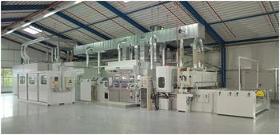
VENJAKOB MASCHINENBAU GMBH & CO KG
Germany
The large volume booth used here enables an increase in the flexibility and, at the same time, a higher production and quality assurance than that used in the VEN SPRAY MIN concept. Integrated fast colour change systems for one and two component lacquer systems as well as the feasibility of a wet in wet application of two lacquer systems (depending on the paint systems) in one pass, establish faster production times, reduced rejects as well as a resource saving utilization of the spray media. Example of a complete finishing line including pre-treatment and drying:
Request for a quote
VENJAKOB MASCHINENBAU GMBH & CO KG
Germany
To conform to market requirements, widely differing machines for painting/coating mouldings, window parts and other profile components were developed. The type and number of guns depends both on the paint system and on the quality envisaged. Air, Airmix or Airless spraying systems can be used for this purpose. The individual machine types can be configured with all conveyor systems of our portfolio and combined with the respective drying systems. The difference between the VEN SPRAY MOULD (LT) and (LW) variants is their type of extraction. LT stands for dry extraction, LW for water-backed extraction. VEN SPRAY MOULD COOLAC is exclusively designed for processing water-based paints. The overspray is constantly collected and condensed in chilled collector systems. The condensation of the controlled air humidity keeps the collector devices and chilled conveyor systems permanently wet. This reliably prevents paint particles from drying during operation. The strip painting plants can be supplemented by further Venjakob plant technologies specifically tailored to the process such as brush sanding/denibbing machines, dryers or conveying equipment.
Request for a quote
VENJAKOB MASCHINENBAU GMBH & CO KG
Germany
Since 1994, the 100% Venjakob affiliated company Nutro, USA has designed and installed turnkey robotic paint lines with robots from the most well- recognized and trusted robot suppliers such as ABB, Fanuc, Kuka, Motoman, and Staubli. Robotic paint lines provide the ultimate in precision and repeatability in painting performance. Due to the reduction in downtimes, training and personnel costs, a robotic paint system is ideally suited for paint application lines where uniform coating of complex 3-dimensional parts is needed. In addition to the solid construction, these robotic paint lines offer the safety needed for robots with the latest PLC and PC interfaces. This makes programming and operating simple and error-free for paint line personnel. Robot painters by Nutro are used for the following parts: Venjakob can provide your company with a complete new line or integrate a robot painter into an existing finishing line.
Request for a quote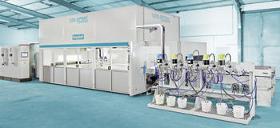
VENJAKOB MASCHINENBAU GMBH & CO KG
Germany
Your production spectrum requires both machine technologies? Utilisation, however, is insufficient for a profitable operation of both systems? In this case, make your decision in favour of our new VEN SPRAY CONTOUR! - A 2 in 1 solution. NEW: Belt cleaning system + cleaner and/or combined configuration with a paper belt conveyor system: the paper belt system can be employed for the use of fast drying, non-recoverable paint/lacquer systems (e.g. polyester and 2 C paints/lacquers), whereas the belt system is suitable for recoverable paint/lacquer systems As an option, a selection can be made between dry or wet cleaning. An energy saving recirculating air operation is also possible with solvent based paints (0-50%).
Request for a quoteDo you sell or make similar products?
Sign up to europages and have your products listed

VENJAKOB MASCHINENBAU GMBH & CO KG
Germany
Venjakob has combined – for the first time in the industry – a robot with a surface spray painting machine. VEN SPRAY VARIO offers the flexibility of an industrial spray coating robot and the high output of an automatic surface spray coating machine. The outer edges of the parts are precisely coated by the robot, and the surfaces are sprayed "inline" at a constant throughfeed speed without any stopping or stop and go by the spray guns of the downstream linear axis. In comparison to the usual Cartesian robot systems on the market, this leads to an approx. 50 % higher lacquering performance(surface|minute). In addition, the new system technology optimises the surface quality, as it leads to visibly better results by linking the paint film at transitions from surfaces to outer edges. Another decisive system advantage of the VEN SPRAY VARIO is the ongoing guarantee of reproducible production qualities. The perfect finish of 3D workpieces is particularly impressive. For coating complex 3D parts as a stationary batch we recommend using the optionally available paper belt transport system. In addition to the described flexibility, the plant technology can also be used for surface coating only. As an alternative to a manual spraying station a single robot can be used for complex geometries. The technically sophisticated paint recovery system achieves maximum efficiency. The recyclability of the recovered overspray and the considerably reduced use of cleaning agents provide an impressive energy balance. In addition, the efficient ventilation technology noticeably reduces the resulting energy costs. The modular design ensures a safe investment in the long term. The integration of additional robots and other adjustments to meet the continuously growing demands on our customers' production processes are possible at any time.
Request for a quote
KAWASAKI ROBOTICS GMBH
Germany
The K Series painting robots combine high mileage with powerful programming flexibility. With six explosion-proof models, Kawasaki has the right robots for every robot-controlled painting application, from the painting cell with individual robots to integrated multi-robot painting systems. The KF193E is a K-Series industrial robot manufactured by Kawasaki. It has a payload wrist of 12kg and arm of 20kg, a horizontal reach of 1,973mm, a vertical reach of 2,887mm, a maximum painting speed of 1,200mm/s, a weight of 720kg, a floor mounting position, and a 3R ø40 mm that can do a triple roll with its hollow wrist. The industrial robot was specifically created for painting applications.
Request for a quoteResults for
Painting system - Import exportNumber of results
20 ProductsCompany type
Category